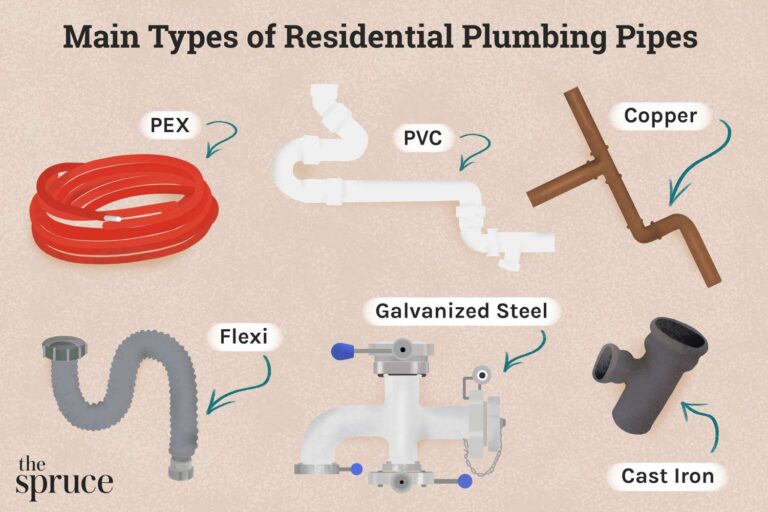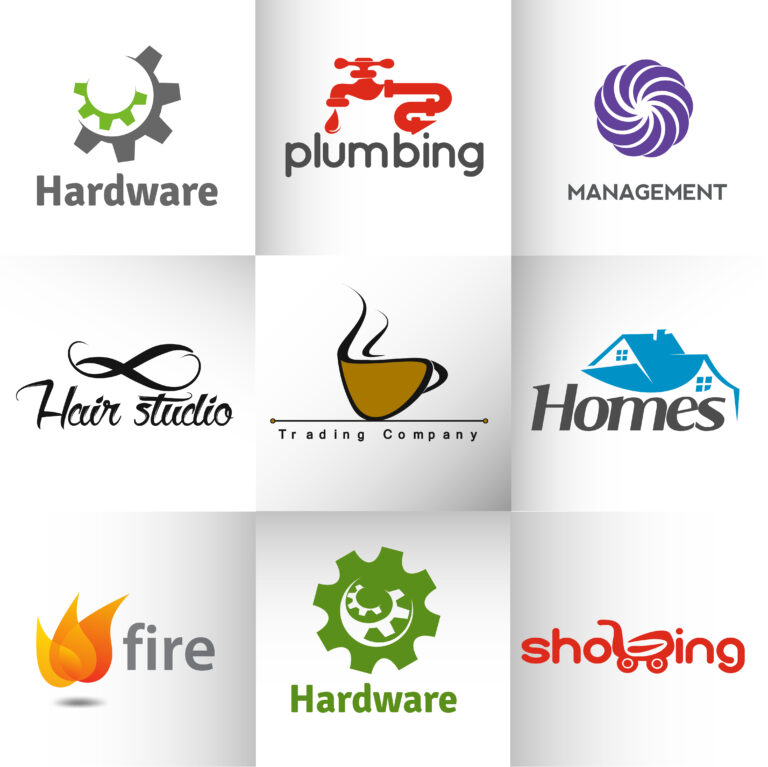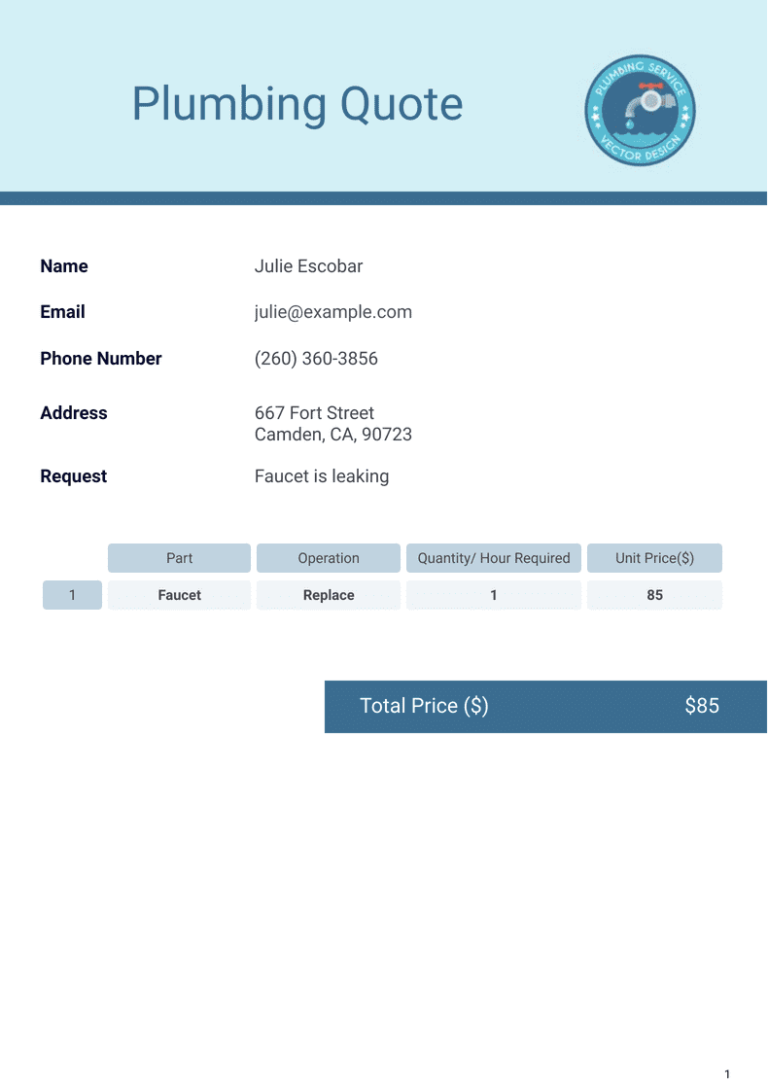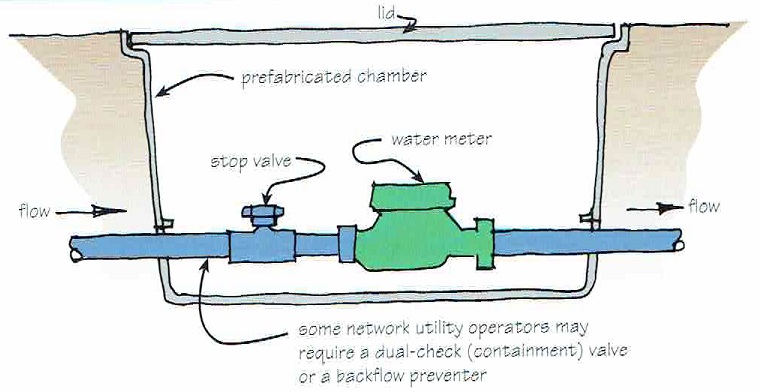What Is Plumbing And Type?
Plumbing is the system of pipes, drains, fittings, and valves used for the conveyance of water and other liquids. Plumbing is one of the most important components of any home or building. It is used to provide a safe and efficient way to distribute water and to remove waste materials. The type of plumbing used will depend on the type of building, the layout of the building, and the specific needs of the occupants. Common plumbing types include residential, commercial, industrial, and medical. Each type of plumbing requires different materials, tools, and expertise to install and maintain.
Section 1: Definition of Plumbing
Plumbing is the system of pipes, drains, and other fixtures used to deliver water into and out of a building. It is also responsible for the removal of waste materials from the building. Plumbing used to be primarily for drainage and water supply, but now it can also be used to regulate air pressure, water temperature, and other factors. Plumbing is often a complex system, and it requires the expertise of a licensed plumber to install and maintain it properly. Plumbing systems are divided into two categories: residential and commercial. Residential plumbing is designed for residential buildings, while commercial plumbing is designed for larger establishments such as hospitals, schools, and office buildings. Each type of plumbing system has different components and is designed to meet the needs of the particular building. Residential plumbing systems include the main water supply line, water heater, and other fixtures such as sinks, bathtubs, and toilets. Commercial plumbing systems are often more complex and include large pipes and fittings, such as fire hydrants, pressure regulators, and water meters. No matter the type of plumbing system, it is important to hire a qualified and experienced plumber to ensure that the job is done right.
Section 2: History of Plumbing
Plumbing is a system of pipes used to supply water and remove wastewater from a home. The history of plumbing goes back to the ancient civilizations of Mesopotamia, Egypt, China, and India. In each of these civilizations, plumbing was used to store and transport water as well as to dispose of wastewater and sewage. The Romans were the first to have a plumbing system that was organized and efficient. They used lead pipes to transport water to public baths and homes, and even developed an aqueduct system to bring water to Rome from nearby rivers and springs.
The plumbing system of the Middle Ages was based on the Roman system, but with some modifications. In the 15th century, the first water closet was invented in Europe, giving people a more hygienic way to relieve themselves. In the late 1700s, the first flushable toilet was developed, which revolutionized plumbing.
Today, plumbing has become a highly sophisticated system that is used in all kinds of buildings. Modern plumbing systems are designed to deliver clean, fresh water to homes and businesses, and to take away wastewater and sewage. Plumbing also plays a role in air conditioning systems, fire protection systems, and other utilities.
Section 3: Types of Plumbing Systems
Plumbing is an essential part of modern life. It is responsible for delivering clean water to our homes and businesses, as well as disposing of wastewater. It also includes the repair and maintenance of gas and water systems. But did you know that there are different types of plumbing systems?
Each type of plumbing system comes with its own unique set of features, benefits, and challenges. In this blog post, we’ll explore some of the different types of plumbing systems and discuss their advantages and disadvantages.
The most common type of plumbing system is the traditional water supply system. This system uses gravity to deliver water from a water source to a home or business. It is typically composed of pipes, valves, and fixtures that are connected to a municipal water supply. This type of system is usually reliable and efficient, but it can be prone to leaks and other issues.
Another type of plumbing system is the pressurized water supply system. This system uses pumps to deliver water from a water source to a home or business. It is often used in areas where the water pressure is low or where the traditional water supply system is not available. This system is typically more reliable than a traditional water supply system, but it can be more expensive to install and maintain.
The last type of plumbing system is the sewer system. This system is responsible for collecting and disposing of wastewater. It is typically composed of pipes, valves, and fixtures that are connected to a municipal sewer system. This system is usually reliable and efficient, but it can be prone to blockages and other issues.
These are just a few of the different types of plumbing systems available. Each type of system has its own unique advantages and disadvantages, and it is important to understand the different types of systems before making a decision.
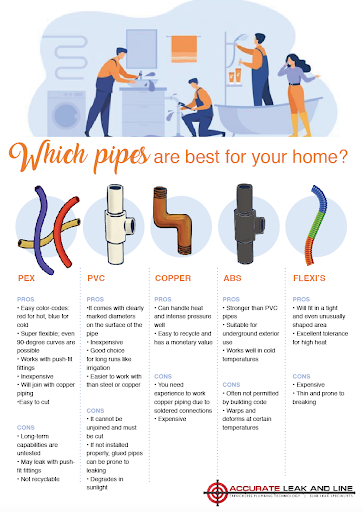
Section 4: Benefits of Plumbing Systems
Plumbing systems are a necessary component of any and all buildings, and they provide a range of benefits that make them especially valuable. Plumbing supplies clean water, ensures efficient wastewater disposal, and provides a host of other advantages. As such, it is beneficial to familiarize oneself with the different types of plumbing and their associated advantages.
Plumbing systems provide a steady supply of clean drinking water. This water is sourced from a variety of sources, such as wells, rivers, and municipal water sources. The water is then filtered and treated to ensure it is safe for human consumption. Plumbing systems also provide wastewater disposal, which helps prevent contamination of the water supply and the environment.
Another major benefit of plumbing systems is that they provide a reliable source of hot water. Hot water is necessary for many tasks, such as washing dishes, taking showers, and more. Without it, many daily tasks would be difficult and time-consuming.
In addition, plumbing systems provide a range of other advantages. For example, plumbing helps regulate indoor temperatures, provides fire protection, and ensures the safety of the building. Plumbing systems also provide a convenient way for people to access and use water.
Overall, plumbing systems provide a number of benefits that make them essential to any and all buildings. They provide a steady supply of clean drinking water, ensure efficient wastewater disposal, and provide a convenient way for people to access and use water. Furthermore, they help regulate indoor temperatures, provide fire protection, and ensure the safety of the building.
Section 5: Common Plumbing Problems
Plumbing problems can cause significant disruption to our daily lives, whether it be a blocked sink or toilet, leaky pipes, or a broken water heater. Thankfully, there are a variety of plumbers who can help provide a solution to these issues. To provide a better understanding of common plumbing problems and their solutions, we have outlined some common plumbing problems that may arise in the home.
Clogged Drains: Clogged drains are one of the most common plumbing problems, caused by buildup of food, hair, and other materials. To unclog drains, plumbers can use a plunger or a drain snake to remove the blockage.
Leaky Pipes: Leaky pipes can be caused by a variety of factors, including corrosion, deterioration of seals, or a shift in the foundation of the home. To fix a leaky pipe, plumbers can locate the source of the leak, and either repair or replace the pipe.
Low Water Pressure: Low water pressure can be caused by a variety of factors, including mineral deposits, clogged pipes, or a blocked main water line. To restore water pressure, plumbers can clean out the pipes, replace the washers, or locate and repair the main water line.
Broken Faucets: Broken faucets can be caused by a variety of factors, including loose or worn-out parts, corrosion, or a shift in the foundation of the home. To fix a broken faucet, plumbers can locate the source of the problem and either repair or replace the faucet.
Water Heater Problems: Water heater problems can be caused by a variety of factors, including a worn-out heating element, sediment buildup, or a broken thermostat. To fix a water heater problem, plumbers can clean out the sediment, replace the heating element, or locate and repair the thermostat.
From clogged drains to water heater problems, plumbing problems can cause significant disruption to our daily lives. Thankfully, there are a variety of plumbers who can help identify and provide a solution to these issues. Understanding the common plumbing problems and their solutions can help you make an informed decision when it comes to resolving plumbing issues in your home.
Section 6: Maintenance of Plumbing Systems
Plumbing systems are an integral part of our modern lifestyle. But, like all things, they require regular maintenance to keep them functioning properly. Failing to do so can lead to costly repairs, or even more serious issues. To ensure that your plumbing system is working as efficiently as possible, it is important to understand the various types of plumbing and how to maintain them.
Types of plumbing systems include residential, commercial, and industrial. Residential plumbing systems include pipes, fixtures, and valves found in homes or apartments. Commercial systems are designed to meet the needs of businesses such as restaurants, stores, and office buildings. Industrial systems are designed to meet the needs of large facilities such as factories, power plants, and warehouses.
Maintenance of plumbing systems should include regular inspection of pipes, fixtures, and valves. Checking for any signs of corrosion, damage, or leaks is essential. It is also important to check for any blockages or clogs, as these can cause significant issues. Regular cleaning of the system is also important to avoid the buildup of debris and fat which can cause blockages and damage. Additionally, flushing out any stagnant water can help to reduce the risk of bacterial growth.
By understanding the types of plumbing systems and how to maintain them, you can ensure that your system is functioning optimally. This will help to reduce the risk of costly repairs or more serious issues and will help to ensure that your system is running smoothly.
FAQs About the What Is Plumbing And Type?
Q1: What is plumbing?
A1: Plumbing is the system of pipes, drains, and fixtures installed in buildings to distribute water for drinking, heating, washing, and other uses, and to dispose of wastewater.
Q2: What types of plumbing are there?
A2: There are two main types of plumbing: residential and commercial. Residential plumbing is usually focused on providing basic water and waste services to a single-family home, while commercial plumbing is often more complex and specialized.
Q3: What types of materials are used in plumbing?
A3: Common materials used in plumbing include copper, PVC, steel, and cast iron. Different types of materials are used depending on the application and the environment.
Conclusion
Plumbing is a vital part of any home or business. It is the system of pipes, tanks, fittings, and valves used to carry water, gas, and waste throughout a building, and to dispose of it properly. Plumbing can be divided into two main categories: water supply and drainage. Water supply systems bring water from the home’s water source into the home, while drainage systems remove wastewater from the home and carry it away. Plumbing also includes fixtures such as sinks, toilets, and tubs, which are connected to the water supply and drainage systems.


